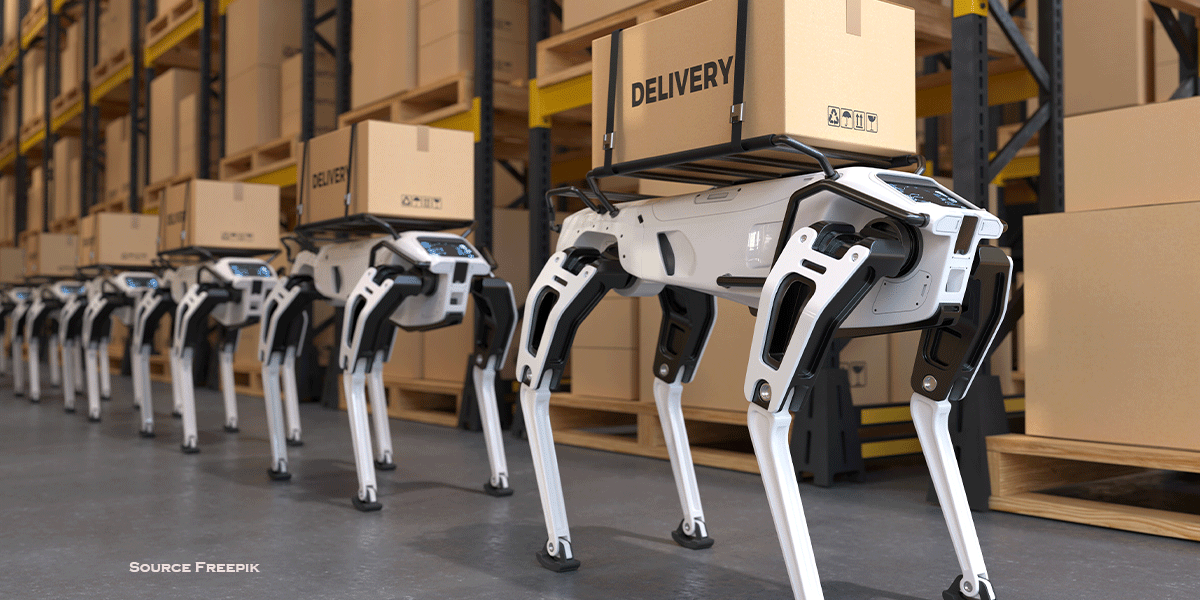Blog on RFID Technology and IoT Solutions
Blog Home
What are the Challenges and Benefits of using AI Inventory Management?
07 August 2023What is AI Inventory Management?
AI Inventory Management? refers to the simulation of human intelligence processes by machines, especially computer systems. It encompasses a wide range of technologies and techniques that enable computers to perform tasks that typically require human intelligence, such as understanding natural language, recognizing patterns, making decisions, and learning from experience.
How AI Inventory Management Works:
AI systems work based on algorithms and data. Here’s a simplified overview of how AI works:
Data Collection: AI systems require a vast amount of data to learn and make informed decisions. This data can include text, images, audio, video, and more.
Data Preprocessing: Raw data is often messy and needs to be cleaned and organized for the AI system to understand and process it effectively.
Algorithm Selection: Different AI tasks require different algorithms. Machine learning algorithms, such as neural networks, decision trees, and support vector machines, are commonly used for training AI models.
Training: Training an AI model involves feeding it a labelled dataset, where the correct outputs are provided for a set of inputs. The model adjusts its internal parameters to minimize the difference between its predictions and the correct outputs.
Feature Extraction: AI models extract relevant features from the data to make predictions or classifications. For example, a facial recognition system might extract features like the distance between eyes and the shape of the nose.
Inference: Once trained, the AI model can make predictions or decisions based on new, unseen data. This is the inference phase where the model applies what it has learned.
Feedback and Learning: AI models can improve over time by receiving feedback on their predictions and adjusting their internal parameters through a process called learning. This can involve techniques like reinforcement learning, where the model learns by receiving rewards for good decisions.
Deployment: Once trained and tested, AI models can be deployed in various applications, such as chatbots, recommendation systems, autonomous vehicles, and more.
Benefits of Using AI Inventory Management:
Enhanced Accuracy: AI algorithms can analyze data with a high degree of accuracy, minimizing errors in inventory tracking, demand forecasting, and order fulfilment.
Real-time Insights: AI enables real-time monitoring of inventory levels, providing up-to-the-minute insights into stock quantities, allowing businesses to make informed decisions promptly.
Efficient Demand Forecasting: AI can predict demand patterns more accurately by analyzing historical data and external factors, optimizing inventory levels and reducing excess or shortage.
Optimized Replenishment: AI-driven systems can automatically trigger reorder points, ensuring that products are replenished at the right time to prevent stockouts or overstock situations.
Cost Savings: AI helps reduce carrying costs by optimizing inventory levels, minimizing storage costs, and preventing over-purchasing.
Improved Customer Satisfaction: Accurate inventory management ensures products are available when customers want them, leading to higher customer satisfaction and retention.
Automation of Routine Tasks: AI automates repetitive tasks such as data entry, freeing up human resources to focus on more strategic activities.
Challenges of Using AI for Inventory Management:
Data Quality and Integration: AI relies heavily on accurate and diverse data. Poor data quality or lack of integration between systems can lead to inaccurate insights and decisions.
Implementation Costs: Setting up AI systems requires an upfront investment in technology, training, and integration, which can be a barrier for some businesses.
Complexity and Learning Curve: Integrating AI into existing processes might require specialized knowledge and training, posing a learning curve for employees.
Change Management: Employees may be resistant to changes brought about by AI implementation, requiring effective change management strategies.
Maintenance and Updates: AI systems require ongoing maintenance, updates, and monitoring to ensure their accuracy and relevance.
Ethical Considerations: AI decisions can sometimes lack transparency, leading to ethical concerns when it comes to issues like inventory allocation and job displacement.
Initial Setup and Customization: Tailoring AI algorithms to specific business needs can be time-consuming and require expertise.
In conclusion, while AI brings substantial advantages to inventory management, it’s essential to consider these challenges and plan for a comprehensive and thoughtful implementation strategy to maximize its benefits while mitigating potential drawbacks.
Some Practical Approaches:
Data Collection through passive devices: Most of us may not be aware that every moving object in the universe is tracked and provides data to machines, systems and many other sources. RFID, Sensor, Images, Active Tags & Chips etc. are just some just some examples how we are data are collected. With that in mind, it becomes futile and inevitable that we are picking data points for many purposes, both knowingly and unknowingly yet resist to the reality of the world to use data for every situation.
Taking a practical example of this in the Warehouse and Logistics operations; one may want a clear vision of each product that comes into existence so that its lifecycle can be tracked from genesis to end-of-life. Major retailers use information from various data points to plan and execute across their massive network of factories, silo of distribution point across to understand and meet supply chain demands.
Interestingly enough, we see this perversive use of un-manned monitoring and tracking through automation and use of robotics in IoT(internet-of-things) solution deployment. Today, IoT is allowing devices of all forms converge into a common platform to quickly enable visibility and traceability through cloud platforms that give access to information on-demand.
So, in the final analysis, a practical approach to AI and IoT is seen as the Autonomous Systems that draw us closer to our Cognitive talents and accelerate our Innovation and Creativity juices towards a better environment and world. Let the heavy lifting of number crunching and analysis be done by the work-house systems while we look ahead of the curve to innovate and decide what benefits our life’s.
- Intellistride.com
- Blog
- What are the Challenges and Benefits of using AI Inventory…